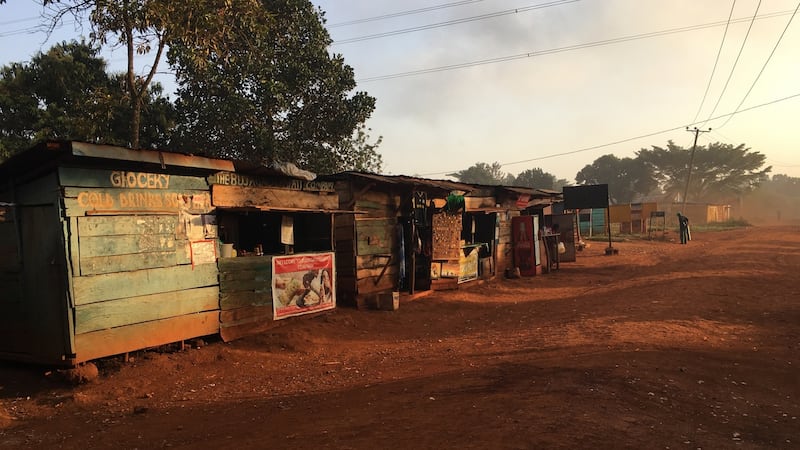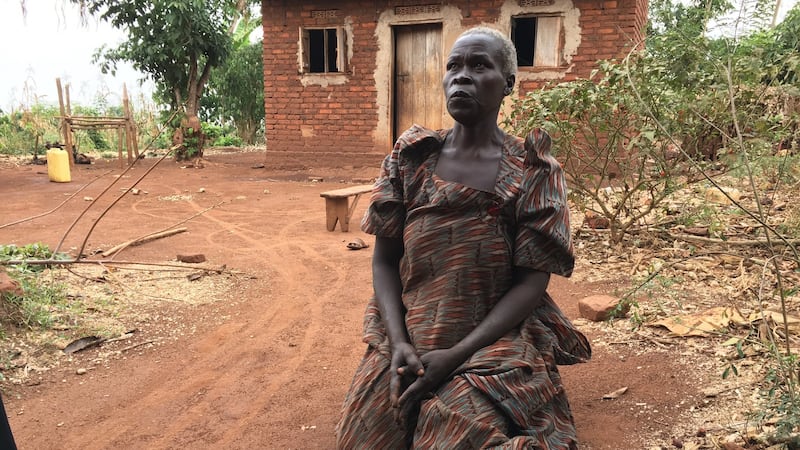Nile Special is unlike any other wave in the world. It forms on a rapid on the upper section of the Nile river in Uganda where the water is warm and the flows consistent. It can be surfed year-round. It is big, fast, safe and accessible.
For nearly two decades it has drawn the world’s best kayakers to this rural corner of Africa. More than that, it has been the training ground for a succession of top Ugandan kayakers who would otherwise live hand-to-mouth as subsistence farmers. And in a few months’ time, it will no longer exist.
About 10km downstream looms the Isimba hydroelectric power station. The monster dam is nearing completion and will soon wipe out some of the best whitewater in the world. For the many people whose livelihoods depend on the river, the future looks uncertain. "It is going to be a massive change," says Ugandan kayaker Yusuf Basalirwa. "A lot of people who earn their living on the water are going to lose jobs."

The headwaters of the White Nile lie about 120km to the east of Entebbe airport, a four-hour drive along Uganda's traffic-choked roads. After the town of Jinja, on the northern shores of Lake Victoria, the tarmac paving gives way to a red dirt road and a short drive along this takes you to the small village of Bujagali, the hub of much of the whitewater activity in the area.
The jobs Basilarwa refers to centre on the rafting industry. Whitewater operators started pitching rafts full of tourists down the huge rapids of the White Nile in the late 1990s. Jinja developed a reputation for adventure sports and a vibrant river economy flourished in the surrounding rural areas.
If kayaking is a hobby for most people, in Uganda it is a living. Aminah Nakiirya, for example, started paddling after her father could no longer afford to pay her school tuition. “My cousin and my brother told me, if there is no work, you’re not going to school, we can teach you how to kayak because you can get a job in kayaking.”

Every January the Nile River Festival, a three-day kayaking event, brings together the community that lives and works along this 50km stretch of river. The organisers describe it as a celebration of the Nile and its people: the river guides and kayakers, the boda boda drivers, chapatti sellers, fishermen, craftspeople, local restaurateurs and others.
So it is unsurprising that this year the impending Isimba dam casts a long shadow over proceedings. This is partly because the locals here understand what a dam does to a river. In the early 2000s the Ugandan government sought to increase the country’s power capacity and for this it turned to the Nile. By 2008, construction of the 250MW Bujagali dam had begun; upon completion in 2012, it transformed an 8km stretch of whitewater into a placid reservoir.
“Changes are thrown at you and you do what you can to adapt,” says Sam Ward whose kayak school, Kayak the Nile, runs the river festival. Sitting at his home outside Jinja, overlooking the Bujagali reservoir, he says most of the kayaking and rafting companies dealt with the Bujagali dam by moving their operations further downstream. But there was a lot of upheaval and “the problem with upheaval is the people on the poverty line really get the brunt of it”.
The dam submerged the spiritually important Bujagali falls, one of the most visited locations in Uganda. Locals lost jobs, small businesses struggled to attract customers and nearly 3,000 households were displaced or otherwise affected. The fear now is that the Isimba dam will deliver a fatal blow to the area by destroying most of the remaining whitewater.
Endurance race
On an overcast Friday morning, 60 competitors load their candy-coloured kayaks on to trucks and make their way to the put-in for the first serious event of this year’s river festival, a 35km endurance race. Starting just below the Bujagali dam, the kayakers will charge downriver, through several large rapids which will not exist next year, before stumbling out of their boats and running the short distance to the finish line. The fastest will do it in about 2 hours and 20 minutes.
Yusuf Basalirwa and his race partner, professional kayaker Bren Orton, finish in second place, just behind Ward and Ugandan Sadat Kawawa. “I’m pretty happy about that,” Basalirwa says, standing on the verdant river bank afterwards. “This race was really good. It was on a section that I do almost every day for my work.”
Kayaking is an expensive sport no matter where you live but most Ugandans could never dream of buying the equipment: the boat, the paddle, the safety gear. For the most part they piece their kit together over time, buying much of it second-hand from visitors.
“My kayak is my everything,” says Basalirwa, who grew up near the river and used to fetch water from it when he was a boy. In 2008, he paid the equivalent of about US$10 to join a local kayak club. “I fell in love with it,” he says. Now he works as a safety kayaker, photographer and river guide for a rafting company. “This sport means everything to me,” he says. “It has changed my life completely.”

The government of Uganda says the hydropower projects bolster the country’s energy capacity and will help bring electricity to rural areas where less than 10 per cent of the population has access to power. But campaigners say most Ugandans cannot afford the electricity produced by the Bujagali dam and that, in any event, neighbouring countries will buy much of the Isimba electricity.
Environmental damage
International Rivers, a conservation NGO, says the World Bank, which financed the Bujagali dam, should step in. In 2007 the bank attempted to offset the anticipated environmental damage of the Bujagali project by signing an indemnity agreement with the government. The agreement protected an ecologically important area around Kalagala Falls, about 17km downstream from Bujagali.
But the new dam, built by a Chinese company with Chinese funding, will flood most of this protected area, displacing local land owners. Campaigners say the World Bank has failed to hold the government to account over the indemnity agreement. "They have completely dropped the ball," says International Rivers policy director Josh Klemm.
The bank has not remained silent, but it has taken little action. In 2015, it expressed concern over the new dam; it later commissioned an addendum report into the project; in January 2018, it granted the government permission to designate a different, less important, part of the river for protection; a visit to Uganda by members of the World Bank’s independent inspection panel took place in February 2018, with another report expected in April.
All the while, construction has continued and now the dam is practically complete. (The government of Uganda did not respond to requests for comment on this article. The World Bank issued only a short statement.)
On Saturday, the river festival moves to Nile Special. Most rapids create waves, but it takes the right set of conditions to create one steep enough for a kayaker to surf as if they were on the ocean. “We’re very lucky that, naturally, Nile Special ended up being just the perfect shape,” says Ward. “People come from all over the world to surf that rapid.”
Submerged
By midday the riverbank is thronged as hundreds of spectators from nearby Matuumu village turn out to watch what will be the last freestyle event to take place on the wave. Under the relentless sun, they cheer on the home-grown talent, shouting support for paddlers such as Basilarwa and Amina Tayona. The rapid in front of them will soon be submerged by the Isimba reservoir. The nearby Hairy Lemon – a popular island campsite and one of the last riverine habitats on the upper section of the Nile – is also living out its final days and will soon be underwater.
It all adds a touch of poignancy to the event. Nathan Tunabaitamu, a Ugandan kayaker who learned his trade on this rapid and now lives and works in Canada, sits among the spectators and wears a tank top with the words "Goodbye Nile Special" on the back. Adriene Levknecht, a paramedic and professional kayaker from South Carolina, says she came to "support the festival and the local community and be able to show my love for what we're about to lose".
Refinancing package
Large dams tend to be very expensive. According to Oxford University research reported in the Guardian, they have one of the highest cost overruns among all infrastructure asset classes. The government of Uganda recently requested a refinancing package to the tune of US$500 million from the World Bank after a budget overrun at Bujagali led to unaffordable electricity tariffs.
Isimba will cost an estimated US$590 million and, according to campaigners, will displace as many as 3,000 people.
Jessie Stone, a medical doctor and accomplished kayaker from New York, worries about the impact the dam will have on public health. “Rates of malaria go up in areas where they build these large dams because there’s ample breeding ground for mosquitos,” she says.
Stone first visited Uganda in 2003. Her attention shifted to malaria when one of her friends on that trip, whitewater luminary Eric Jackson, contracted the disease. Now her organisation, Soft Power Health, runs a large clinic offering primary and preventative healthcare in Kyabirwa village, a short walk from Bujagali.
Doesn’t make sense
Stone says the Isimba dam, at its current location and size, doesn’t make sense: the social and ecological impact of its reservoir outweighs the project’s benefits. “There are people who are losing their livelihoods, their homes, their land and they’re not being compensated,” she says, sitting in her office at the clinic. “We have a population that already suffers from protein malnutrition. And if they lose their land and their ability to farm and survive, they’re not going to be able to grow their own food. Where are they going to get their food from, how are they going to live?”
Julius Caesar, a local who works at the Soft Power Clinic, takes me to meet the residents of Bulangira Bukose, a small village situated next to the Isimba construction site. An artist by training, Caesar’s Bujagali crafts business deteriorated after the dam stemmed the flow of tourists to the area.
While Godfrey, our driver, steers the car along the dusty Kumuli road, Caesar sits in the passenger seat, studying a printout of the upcoming FA Cup fourth round fixtures. The drive from Bujagali takes about an hour. It’s slow going along the lumpy, unpaved main road – a constant source of frustration for drivers in the Busoga region. Across the river, in Buganda, the main road is paved with smooth tarmac. Ask any taxi driver why this is, and they roll their eyes and say, “this is Africa”.
Pick-up trucks rattle through Bulangira Bukose each day, shuttling groups of workers in orange overalls to the dam site. Most of the villagers here are farmers who eke out a living growing crops such as maize, corn, coffee, cassava and soya bean. The residents who lived closest to the river bank have already been displaced; their old homes now just piles of bricks in flattened fields.

Many of the remaining residents say they expect their land to be taken but they do not know when. Some have received only partial compensation for their farms; others no compensation at all. Kneeling outside her home, Bitu Nangobi says she is afraid to plant crops in case her land is taken before harvest time – a typical concern.
‘Full of cracks’
Residents also say the construction work has damaged their homes. You need a lot of explosives to build a dam and the shrill warning of an air raid siren has become a familiar – and resented – sound around here. Houses built from clay bricks or wattle and daub stand up poorly to the shock waves created by regular blasting. “Their houses are full of cracks,” says Caesar.
The blasts spook their animals and cause miscarriages among livestock (even their chickens are out of sorts). Have they received compensation? “Not even a coin.”
During the construction of the Bujagali dam, the World Bank paid witchdoctors to rehome the spirits who dwelled in Bujagali Falls. Now the spirits live about 17km downstream, at Itanda Falls. And it is to Itanda that the river festival moves on Sunday for its final event: the fearsome Hendri Coetzee memorial race.
Itanda falls is too difficult and dangerous for rafts to attempt but kayakers can weave a safe line from top to bottom. It involves positioning yourself correctly on a steep entry ramp and punching through a wall of whitewater before paddling hard left to right across a wide channel to avoid a huge recirculating feature downstream. Bren Orton, tied for first place overall at the start of the day, misses his line in the opening heat and crashes out of the contest with two broken ribs.
‘Last chance’
Later, Leitrim man Jack Ledwith groans when he finds out he has made it through to the next round and must run the rapid again. "I touched the finish flag and realised, oh god, I might have to be in the finals," he says afterwards. "It was a bit nerve-wracking." The 20-year-old DIT student is visiting Uganda for the first time and says the impending dam spurred him to make the trip. "This is my last chance," he says. "I never will forget it."
The extent of the Isimba flooding will be known only when it happens. The dam itself has been beset by delays around management issues but most expect the inundation to occur this year. It remains to be seen whether the river and its dwindling number of rapids will continue to sustain the local economy or attract the world’s best kayakers. Likewise, only time will tell what becomes of the families pushed off their land and the Ugandan kayakers whose river and workplace is disappearing before their eyes.
Sam Ward, who went on to win the festival outright, remains sanguine about the future, saying the festival will adapt and return next year. “It will be about celebrating what’s left and still paying respect to the river,” he says. “It’s going to be about bringing the community together once we’ve had this part of our river torn away from us.”
This report was supported by the Simon Cumbers Media Fund
















